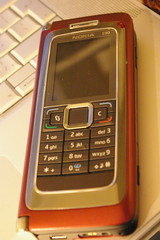4 minutes estimated reading time
MobileYouth trend workout introduction

Here is the notes that I made mostly from the morning sessions of the mobileYouth trend workout. There will be presentations and videos of the event available from their site next week. I was speaking on a panel later in the afternoon so was able to pay attention to the earlier panels.
Graham Brown – mobileYouth, the organisers of MobileYouth trend workout
Event introduction
- Young people spend about 1.3 trillion USD per year, 130 billion of which is spent on mobile services (or roughly ten per cent of their total income). This impacted the sales of chocolate, music (in the form of CDs) and cigarettes
- Young people spend an average of 20 – 25 GBP per month
- Mobile services of young people grow at about 4.5 – 5.0 per cent year-on-year. This growth comes at the expense of, and in competition with television, entertainment and clothing
Brown asked the audience of mobile operators to think beyond ARPU and instead think about lifetime spend. By the time that consumers are 33, they have already completed half their lifetime spend. Yet this is the age group that is currently most attractive to carriers looking at the ARPU model. It was an interesting counterpoint to marketers viewing the grey market as the next big opportunity.
Mobile marketers run the particular risk of ending up with an aging or aged brands due to the virtue of a misplaced focus. Brown delivered a case study on Harley Davidson to prove his point. In the 1960s circa Easy Rider, Harley Davidson was a youth brand, now their average customer age is 51 years old.
If things carry on this way, in a little over twenty years, their customer base will be 70, possibly only ready to ride a zimmer frame. According to Brown the consumer lifecycle begins at 10 years old.
Geoff Goodwin and Marc Goodchild – BBC
Children still view as much children’s television as ever, however their consumption of television overall has declined as expected
The BBC is now looking for integrated media properties and partnerships. No one organisation has it right, hence the need for partnerships. Young audiences churn at an incredible rate so the BBC is constantly having to rework itself to remain relevant, rather than having the brand advantage that most people thought they had.
Important mobile technologies for young people are FM radio, SMS and Bluetooth. This low-level tech is because most young people get by with found technologies: hand-me-down mobile phones, an old TV from the living room or a discount model picked up at ASDA or Tesco and vintage computers from work or the living room.
Roundtable: Johan Winbladh mobile channel editor – Danish Broadcasting, James Davis head of mobile – News International, Michiel de Gooijer business development manager – Endemol, Giovanni Maruca director interactive and mobile EMEA – Paramount and Tim Hussain head of mobile monetisation – AOL UK
Mr Winbladh was the hawk in the discussion: mobile devices weren’t ready to put to the kind of mobile experience that users wanted and the industry thought was appropriate, whereas the other audience members felt that the latest generation of mobile handsets and all you can eat tariffs are readdressing the issue.
Maruca was excited about the way that advertising could be delivered in a context aware manner. By adding value to the advertising it can become unobtrusive and essentially no longer be advertising, but information.
Roundtable: Richard Miller general manager for consumer convergence – BT and Derrick Heng director segment marketing and communications – Singapore Telecommunications Limited
BT’s vision of Wi-Fi as a mobile technology is at odds with the GSM/W-CDMA orthodoxy of the mobile industry.
SingTel in contrast has complete fixed and mobile integration and pay TV. SingTel segments its customer base and actively manages the customer relationship with a long-term view. They provide email to mobiles on an ad-funded revenue model. In Singapore the killer apps for mobile usage by young people were email and SMS. By comparison audience member Jonathan MacDonald sales director of Blyk pointed out that for UK mobile users the three killer apps are voice, SMS and the phone’s alarm clock.
The audience debate then raged, the killer application for young people is doing the basic things well, providing decent customer service, having a decent relationship with the clients and not charging them excessively for that relationship. More related content here.